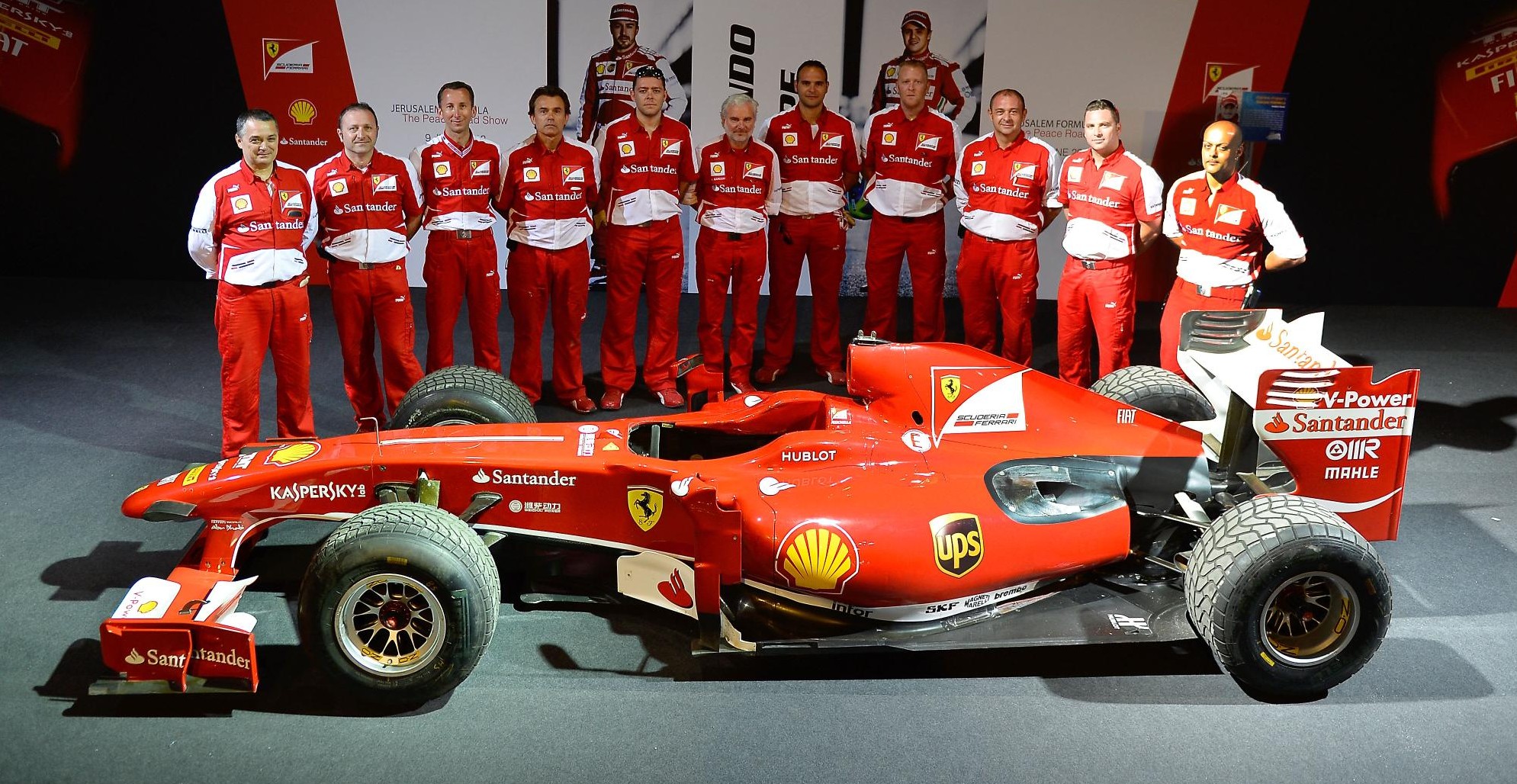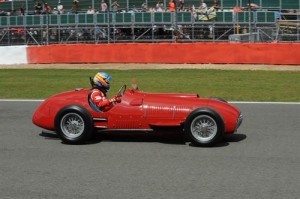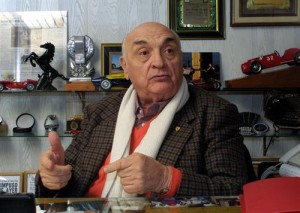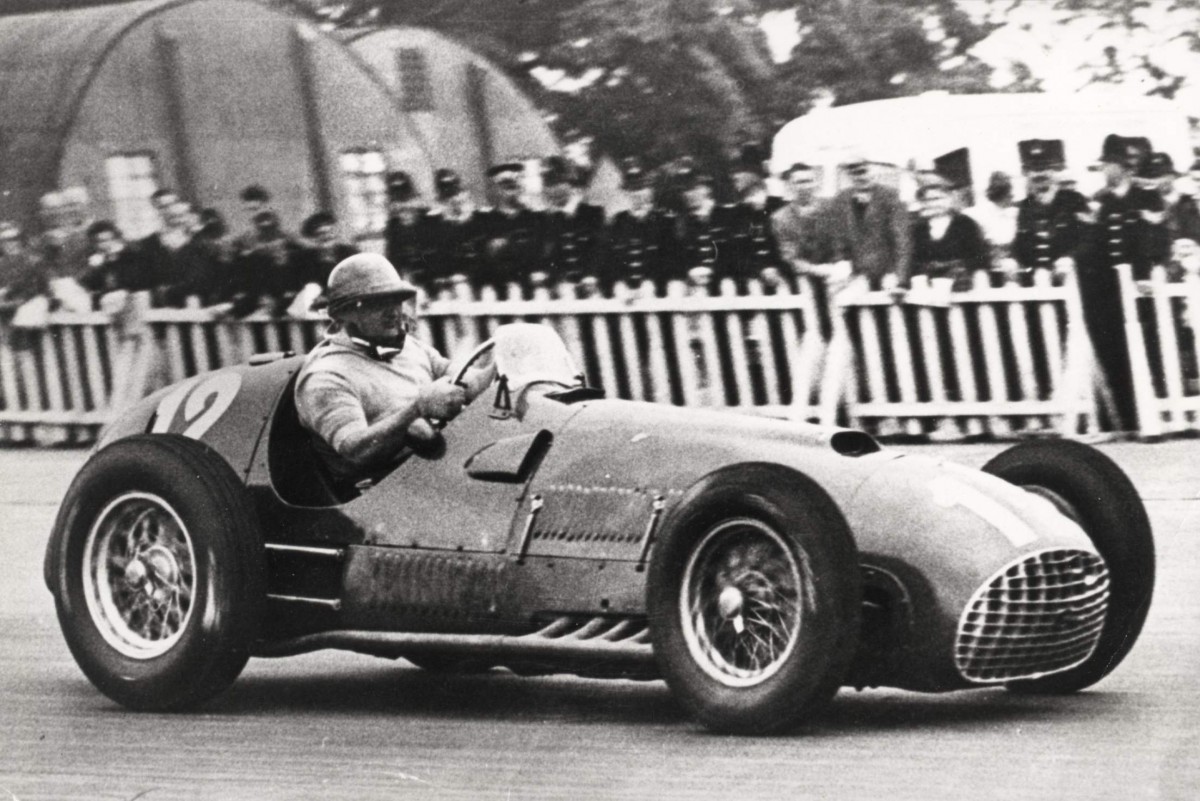
Jerusalem, 15 June – A Formula 1 car, or to be more specific in this case, a Ferrari, usually only “sees” about twenty places in its life, namely those that host the Grands Prix during its one season of racing life. Some of them however, have a much longer history, that sees them travelling around the world, usually to places that will more than likely never host a real race. There are those cars that have been sold to customers, which are normally only used on circuits at events organised by F1 Clienti, the branch of the Maranello marque’s Corse Clienti Department and then there are the cars the Scuderia uses for promotional events such as the Jerusalem Peace Road Show.
The F60 that mesmerised the hundreds of thousands of people who were present over the two days in Jerusalem did not have a particularly exciting racing history, as it won just a single race in 2009, when Kimi Raikkonen took it took it to victory in the Belgian Grand Prix. But it will no doubt take its place in the history books for having been the first Formula 1 car driven through the streets of a city whose own history dates back thousands of years. It and its sister cars, from the F2008 to the F10, to name the cars, have done demonstration runs this year in fascinating places such as the seafront in Rio de Janeiro and the centre of Warsaw and other much more well known venues such as the race circuits of Yas Marina and Shanghai. The next event takes place in Moscow, in the shadow of the Kremlin, at a show that has now become a regular feature, the Moscow City Racing and there will also be other events planned on the F1 Clienti calendar.
Looking after these cars is a group of around twenty people, all with years of experience and above all, driven by a great passion for Formula 1. The work takes place in Maranello, where they are prepared with the same attention lavished on them when they raced, before being run on usually improvised tracks, which are a long way off in terms of surface and infrastructure to those found at a Grand Prix venue. This is why Ferrari’s preparations for an event like the one in Jerusalem began over two months earlier, with engineers from Maranello carrying out an inspection of the course. Normally, the condition of the track surface and the safety measures in place for the public are the main priorities for the men in red: getting a Formula 1 car to run on streets that usually see every type of powered vehicle, is not something to be taken for granted, not even in Monaco, where they have fifty years experience of this. Another area that has to be thought about is where the cars are to be kept (there’s always a spare in case its needed,) because obviously, almost always it’s a case of using a temporary structure: a Grand Prix-type pit garage is improvised and the creativity of the mechanics is always tested to the  limit. The number of people involved in each event varies according to the programme: if no pit stops are planned, then around ten is enough, while otherwise the number rises to eighteen Over fifteen boxes of equipment are sent along, which seems like a lot but it’s not too surprising: in fact, the events involve all the tasks that are carried out during a race weekend, from running the engine to looking after brakes and tyres, from telemetry to the radio transmissions. Everyone has a great enthusiasm for their work, despite the conditions being very different to those at a Grand Prix. It’s true some of the adrenalin that only comes from competition is missing, but everyone involved feels the responsibility, the honour and the pleasure of representing all over the world the most successful team in the history of motor sport. On top of that, there’s also the opportunity of seeing different places or developing new interests, such as the technology involved in the on-board camera, which is one of the “obsessions” of Gianni Petterlini, a past Chief Mechanic for the Scuderia and today the coordinator of the F1 Clienti mechanics.
limit. The number of people involved in each event varies according to the programme: if no pit stops are planned, then around ten is enough, while otherwise the number rises to eighteen Over fifteen boxes of equipment are sent along, which seems like a lot but it’s not too surprising: in fact, the events involve all the tasks that are carried out during a race weekend, from running the engine to looking after brakes and tyres, from telemetry to the radio transmissions. Everyone has a great enthusiasm for their work, despite the conditions being very different to those at a Grand Prix. It’s true some of the adrenalin that only comes from competition is missing, but everyone involved feels the responsibility, the honour and the pleasure of representing all over the world the most successful team in the history of motor sport. On top of that, there’s also the opportunity of seeing different places or developing new interests, such as the technology involved in the on-board camera, which is one of the “obsessions” of Gianni Petterlini, a past Chief Mechanic for the Scuderia and today the coordinator of the F1 Clienti mechanics.
All their efforts and enthusiasm are expressed in fifty or so kilometres on average, on every day of one of these events. Not a lot, but enough to enrapture people of every age, gender, religion and race who have had and will have the good fortune to see, from really close up, racing cars like the F60, fly through the streets of their city, as has happened over these past two days in Jerusalem. The smiles on their faces make it all worth while, for Ferrari and for Formula 1 in general and there can be absolutely no doubt about that.
 FAREWELL CABEZON
FAREWELL CABEZON
Maranello, 15 June – A great friend of Ferrari passed away today, José Froilan Gonzalez died at the age of ninety in his native Buenos Aires. His name will forever be linked to that of the Scuderia; indeed he was the one, who on 14 July at Silverstone, sixty two years ago, took the Prancing Horse’s first victory in a Grand Prix counting towards the Formula 1 World Championship.
“The news of the death of Gonzalez saddened me greatly,” President Luca di Montezemolo told ferrari.com from Maranello where he was attending a day for the families of all the employees of the company. “We had spoken not that long ago, talking about cars and racing, the topics he was most enthusiastic about. Over all these years, he was always very attached to Ferrari and, as a driver and a man, he played an integral part in our history. His death means we have lost a true friend.” The last meeting between “El Cabezon” and the team with which he was linked above all others in his racing career, took place appositely enough on 10 July two years ago at Silverstone. On that day, Fernando Alonso actually drove the 375 F1 that Gonzalez took to victory in 1951 in the British Grand Prix, an exhibition that had previously taken place back in 2001, when the Argentine driver was there in person to share the pleasure of the moment with Michael Schumacher. A few hours after the more recent demonstration, as if scripted by fate, Fernando won the race, to give the Scuderia its only victory in 2011.

“I only realised what it meant to have won this race on the following Wednesday when I met Don Enzo at Maranello,” said Gonzalez in an interview he gave to our website on the sixtieth anniversary of the Silverstone win. “In his office there was a big photo of the victory right behind his desk! He asked me to sign it and to tell him every last detail about the race and then he gave me a gold watch with the Prancing Horse on the face. Only three days later did I really understand that it was a special win. Ferrari is the top in the world of motoring. For me, it has always been a cause of pride that I managed to take this first win, especially given what the marque went on to achieve in the past sixty years all over the world.”

